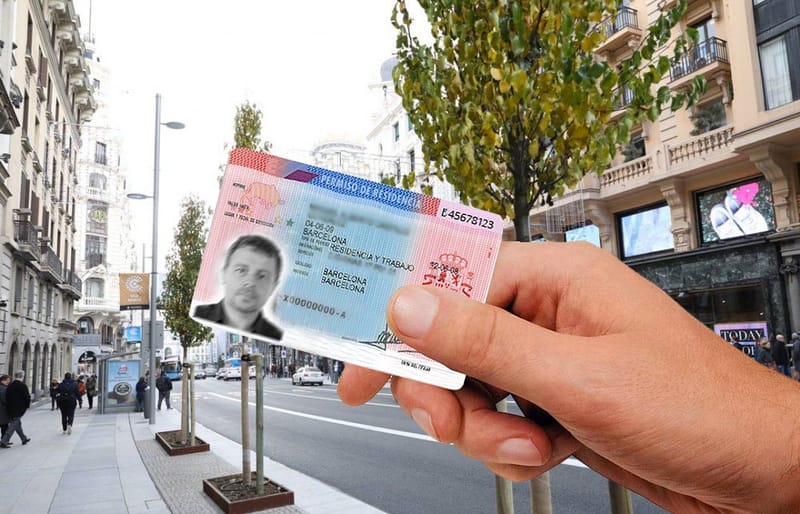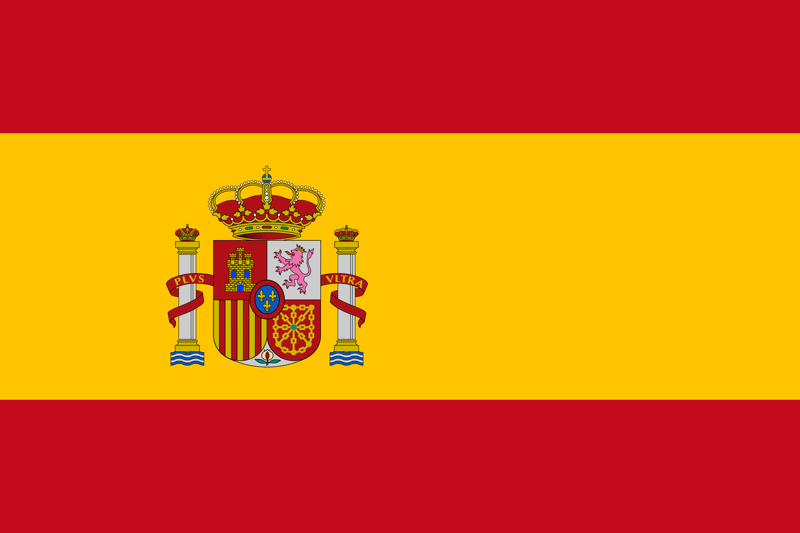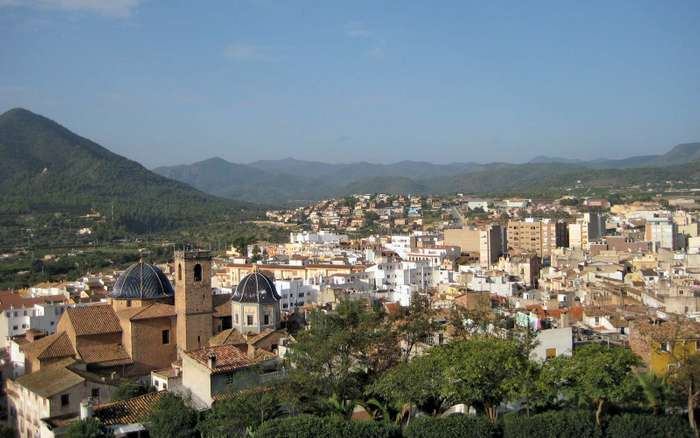Non-Lucrative Residence Visa in Spain
Here you will find a complete guide about one of the most requested and easy-to-get visas: the non-lucrative residence visa. If you are planning to move to Spain and not working in the country (at least for the first year), or to retire in the country, this will be your best option. In this article you will find all the documents, requirements and legal process step by step to get this residence permit.
Read MoreEven if it does not allow you to work, it is still one of the most sought-after visas. Who is the Spanish non-lucrative visa ideal for?
Read MoreApplying for a Spain Non-Lucrative visa is quite similar to the application process for every other long-term Spain visa. The first thing that you need to do is to find out the following:
Read MoreWhich are the benefits that this residence permit offers?
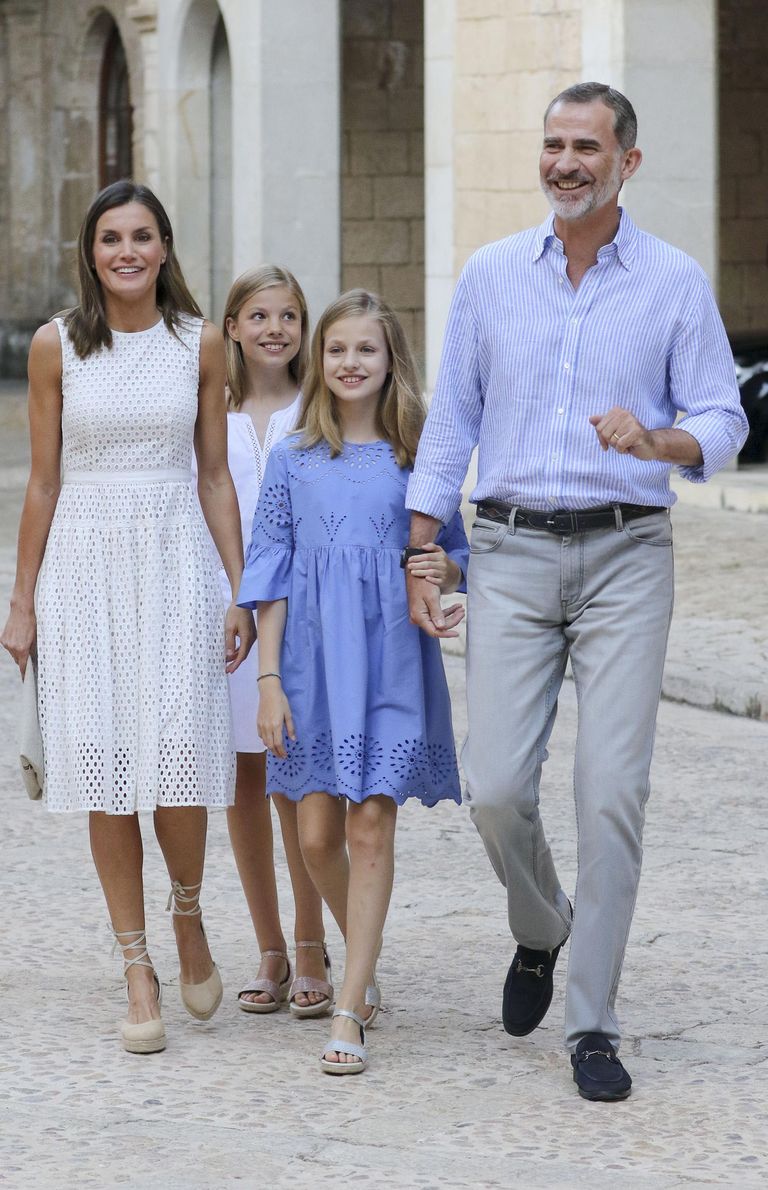
Bring your family with you
Through a joint application, you will be able to get the residence for your spouse and children easily..
Learn More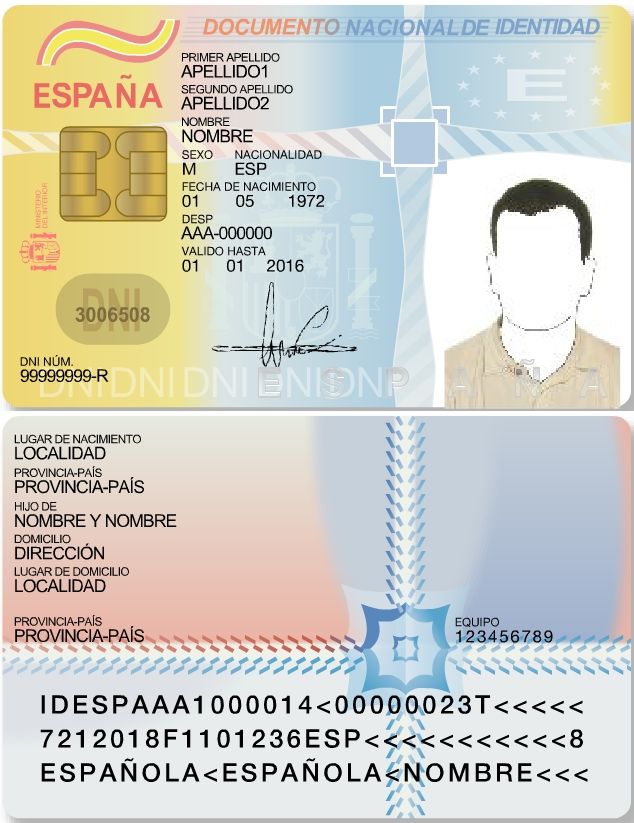
Get the long term residency, and then the nationality
We are talking about a temporary residence permit that lasts 1 year. After that, the first and second renewals last 2 years.
Learn More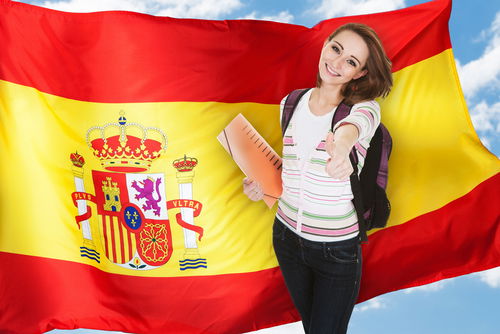
Possibility of studying and doing paid internships
This visa is similar to the student visa
Learn More
Possibility to work abroad
Even if you cannot work in Spain, you will be allowed to work with/in other countries.
Learn More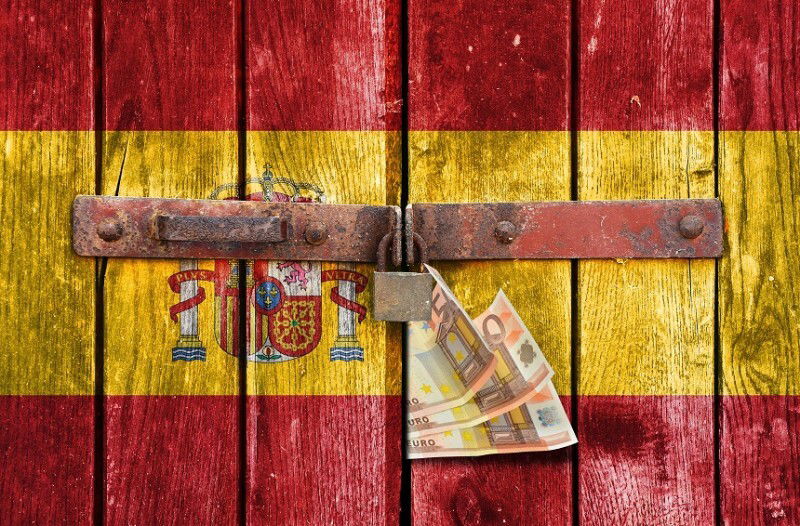
No need to invest to obtain this permit
In the same way as other permits such as the investor’s visa
Learn More
Travel with total freedom in Europe
Finally, another advantage is that it will allow you to travel through the Schengen territory without any problem and with total freedom.
Learn MoreInformation about non lucrative residence in visa section beirut

BLS center:
Address: 2nd Floor, Kalot Center, facing OMT, Badaro, Sami El Solh Boulevard, Beirut-Lebanon
Call center: (00 961) 01 – 390383, 391383, 392383
Website: https://lebanon.blsspainvisa.com/
For information and appointments to submit RESIDENCE and STUDENT Visa applications for Spain (for Lebanese and Syrian Nationals and for legal residents in Lebanon and Syria), please contact:
Embassy of Spain:
Address: Hadath-Baabda, Palais Chehab, near Antonine University, facing St Joseph Church
Tel: (00 961) 05 - 464120 / 1
Email: emb.beirut.vis@maec.es
Visa section Beirut
NON-LUCRATIVE RESIDENCY
The non-lucrative residency visa application allows the applicant to reside in Spain for one year without engaging in any profitable activity. This residency is for applicants wishing to retire in Spain or who are able to conduct their business remotely. One of the main requirements is to submit proofs of enough financial means to cover the living expenses of the concerned person during their one-year stay in Spain.
 National visa ENG.pdf
National visa ENG.pdf Non_Lucrative_Residency_Requirements_EN.pdf
Non_Lucrative_Residency_Requirements_EN.pdf Formulario_790_052.pdf
Formulario_790_052.pdf Formulario_EX_01.pdf
Formulario_EX_01.pdf TEXTO CERTIFICADO MEDICO.pdf
TEXTO CERTIFICADO MEDICO.pdfVisa application
The legal process is divided into two parts: the initial visa application in the country of origin, and obtaining the residence card once you enter Spain.
Visa application
The application for this residence authorization must be done at your country of origin or there where you have your legal residency. Entering in Spain as a tourist won’t allow you to manage the procedure. You must start from outside the country.
First of all, you will have to send all relevant documents to the Spanish Consulate (you will find which documents in the following section).
The government delegation in charge of analyzing all the files will have 1 month to submit their results. In the case of not obtaining one within this period, the request will be rejected due to “administrative silence”.
Once you get a favorable answer, the visa will be stamped in your passport, and you will be able to move on to the next step: travel to Spain.

Obtaining the TIE or foreigner’s identity card
In this case, it won’t be necessary to obtain the NIE number once in Spain. This identification comes stamped on your visa.
However, once in Spain, the first thing to will be to register in the municipality where you will be living, and within a maximum period of 1 month, you go to a police station, register your fingerprints, and receive the TIE or foreigner’s identity card.
That’s how easy it is. You will be able to enter the country and receive your residence permit within 40 days. Without having to do anything else.
On the exact day that you are given the visa in your passport, you will already be a legal resident in the country, so it will start counting towards obtaining citizenship.
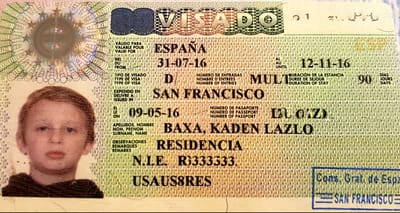
Which documents should I submit?
- National visa form.
- Form Ex-01.
- Insurance. As we mentioned, this insurance needs to be from a Spanish Company and not an international one; and private
- Bank certificate, demonstrating the possession of over €25,000 per year.
- Photos, 3×4 cm with white background.
- Original Passport.
- A medical certificate, demonstrating that you do not suffer from any of the recognized diseases that would prevent your entry into the country.
- Criminal records, properly translated and legalized.
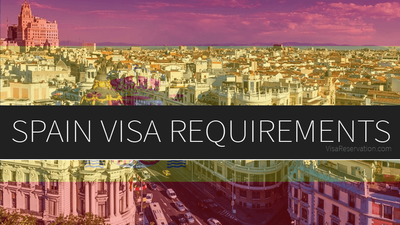
Main causes of denial and what to do
However, failure to comply with any of the requirements explained in this article will be a reason for denial.
But can anything be done in that situation or have you lost the opportunity to start living in Spain?
In these cases, and in order to ensure that you can securely obtain your residence permit, it is best to go to a lawyer. An immigration lawyer may initiate an appeal or court process. In this way, it can be argued that the application was unduly rejected and thus obtain the visa. Only in very particular cases can the application be resubmitted without a legal process behind.
we can help you approve your request if you have had any denial problem.

How to renew the non lucrative permit
You have two different options.
The first one is to renew your permit. If you still fulfill the conditions (800% of the IPREM on your bank account, private insurance policy…), the renewal will be possible.
Note that in this case, you will have to prove an amount of money sufficient for two years, not for one as in the initial application. That is because, as the renewal lasts two years and not one, the monetary requirement also doubles.
Second, you can also change the initial authorization into a work permit, as we will see below. And you can change to a work permit to work for a company or to become a self-employed individual.
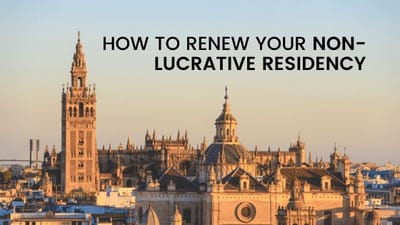
Non-lucrative visa modification to work permit
That is the best alternative for those individuals who have enough savings to stay one year abroad (in Spain) but then would like to continue working in order to earn a living.
In that case, you can spend part of your last non-lucrative months searching for a job in the country. Once you find it, the procedure for your employer will be easy. Why? Because you already possess an authorization to live.
He or she will just need to present an authorization to make you able to work in the country. That will grant you an authorization to live and work in Spain for two additional years.
But you can also transition into a work permit as a self-employed individual, so you don’t work for anyone but for yourself. You would then become “autónomo” in the country.

Taxes to be paid with the non-lucrative residence visa
First of all, because this residence card requires you to stay a minimum of 183 days a year in the country to renew, you will become a tax resident.
- This basically means that you will have to pay income tax on your worldwide income. Keep in mind that there are double taxation agreements. These will prevent you from paying twice for the same income if it was generated in another country but also paid in Spain.
- In the event that you decide to invest, for example in company shares, and you generate a profit from your investments, you will have to pay capital gains tax.
- In addition, in the case of buying a property, there may also be taxes associated with the transaction.
And, if you have any other legal doubt, we are at your complete disposal!

Apartments for sale in Spain
F.A.Q
What is the non-lucrative visa?
The visa allows you to say in Spain for one year after entering the Spanish territory. You must spend a minimum of 183 days in the country to be able to renew. This also means that you will become tax resident and taxable on your worldwide income (subject to double tax treaties).
The visa can be renewed every 2 years until you get permanent residency, which is available after 5 years in the country.
Although the visa does not allow you to carry out any type of economic or professional activity in Spain, it does not require you to invest in the country to obtain a visa. You simply have to show that you have sufficient means to support yourself (and your family). That does not mean that you cannot invest in Spain while there with this visa. You are free to invest in any business and generate additional income.
Although you are not able to earn while staying under this visa, you can study and this includes a paid internship. You can also work in another country and so can be a good option who want to spend time in Spain but continue working in another country.
The Non-Lucrative Visa entitles you to travel freely within the Schengen zone.
Requirements for a Non-Lucrative Visa
- Demonstrating you have sufficient funds
In the case of the non-lucrative visa, you must prove that you have 400% of the IPREM annually in your bank account. The Public Indicator of Multiple Effects Income which is the benchmark in Spain for the allocation of aid and subsidies. In 2020 this means that the main applicant for this visa must demonstrate he or she has at least 25.816,12€. This is, however, the minimum and a higher amount may be required. For each dependent travelling with you will require that you have an additional amount equal to the IPREM (6.454,03€ annually).
You will be required to provide a bank certificate or bank statements from the last six months. The funds may be in multiple accounts. - Private health insurance
Applicants must have a private health insurance policy with full coverage in Spain with no copayments provided by a Spanish insurance company for at least one year.
Application process
The application process is divided into two parts: the initial visa application and then obtaining the residence card once you enter Spain.
Application process & Visa application
The application process is divided into two parts: the initial visa application and then obtaining the residence card once you enter Spain.
Visa application
The application must be made in your country of origin or there where you are legally resident. You are not able to apply in Spain having entered the country as a tourist.
The application should not be made more than 90 days before your intended travel date. You will have to send all relevant documents to the Spanish Consulate:
- National visa form.
- Form Ex-01.
- Private Health insurance policy from a Spanish Company
- Bank certificate, demonstrating the possession of required funds per year.
- Photos, 3×4 cm with white background.
- Original Passport.
- A medical certificate, demonstrating that you do not suffer from any restricted diseases.
- Criminal record translated to Spanish.
Obtaining the TIE or foreigner’s identity card
Once you have your visa you must enter Spain freely within a maximum of 3 months.
Once in Spain, you will need to register on the Padron in your local municipality and TIE (foreigner’s identity card).
What is a NIE Number?
Your Spanish NIE number will start with a letter, followed by seven numbers and another letter in the end (for example : Z7654324-B).
Each NIE Number is unique to one person and it is neither transferable nor does it expire (NIE Numbers issued in the past may have had a expiry date in some area’s).
If you are planning on working in Spain or staying for longer than 3 months you are required to have one.
You will required A NIE Number to:
-Buy, sell or insure a property
-Arrange credit terms or a Mortgage
-Pay Taxes in Spain
-Be paid for employment
-Use short-term employment agencies
-To study/attend University
-Apply for a business permit to start a business
-Register with social security and arrange receipt of social security benefits
-Apply for a driver’s license/Transfer to a Spanish license
-Pay utility bills
-Inherit assets
What is TIE (Tarjeta de Identidad de Extranjero)
Who needs a TIE?
Differences between NIE number, TIE and EU Certificate
Well, It is actually true that obtaining this number will allow us to perform certain procedures such as buying a property in Spain, but it will not be enough to reside or work in Spain.
Lets summarize then what is the NIE number:
-It is obtained in the offices of the National Police or in the Spanish consular offices located in the foreign territory.
-This number operates as an individual identifier that will never change.
-It does not grant any right regarding the possibility of residing or working in Spain.
– However, it allows certain legal acts such as the purchase of shares and social participations of a company or the purchase of real estate.
So, if you want to live or work in Spain, what do you need? Well that will depend on whether you are an EU citizen or a non-EU citizen.
-If you are an EU citizen:
If you want to live and work in Spain for more than 3 months you must obtain a EU Citizen Registry Certificate. This document is issued the same day it is requested and contains the NIE number. It is obtained in the offices of the National Police of the province where you will establish your residence. This card does not have an expiration date although the Permanent EU Certificate may be requested after 5 years of residence in Spanish territory.
-If you are a non-EU citizen:
Your options are different depending on whether you decide to come to Spain with a student visa, a non-profit residence visa, a work visa, etc. Whatever your choice is, you will be assigned a NIE number when you obtain your first visa. If your stay in Spain ends up being longer than 6 months you will also be obliged to obtain the TIE (Foreigner Identity Card) which is a plastic card that will contain a photograph of you and must be renewed each time a renewal of your authorization is obtained.
How Long Can I Be Outside Spain Without Losing my Residency?
Most of them intend to stay in the country for the long term, and not just for one or two years. That requires renewing their card. But for renewal to be possible, it is essential that the foreigner does not leave Spain any longer than what the law allows.
But how long are we talking about? What is the maximum time outside Spain before losing the residency? In this article, we will answer this question according to the different possible cases.
Extinction of the residence card due to being outside Spain
As a foreigner who has started living in Spain, it is very likely that you will want to return to your home country after some time.
Whether it’s to visit your family for Christmas or to go on your holidays during summertime, many people decide to leave the Spanish territory for an extended period of time.
However, this can lead to certain problems.
The Spanish law establishes a maximum time outside Spain when you have a residence permit.
And the reason behind this is really simple.
Possession of a residence permit means that you are “resident” in the country. If you are outside the country for a long period of time, this condition would not be met.
That’s why if you exceed the time established by law, your residence card will be extinguished for being outside Spain for more than you have to.
The question now is: how long should be outside the country to lose your residence? Let’s see, as it depends on your particular case.
Maximum time outside Spain allowed to avoid losing your card
In order to answer this question, we must differentiate between the two types of cards under the time criterion: the temporary cards (the initial ones for 1 year, and the first 2 renewals); and the permanent ones.With a temporary card
Article 162.2 of Royal Decree 557/2011 establishes the maximum period of absence allowed with those cards.
In order to know the maximum time you can be out of the country with a temporary residence, you must take into account two different conditions
- Firstly, you must not be outside Spain for more than 6 months within a period of one year.
- In the case of sporadic departures (in your first year in the country 1 month, in the second 3 months, etc.); the sum of these periods outside Spanish territory during the last 5 years may not exceed 1 year.
With a long-term card
In the case of long-term, long-term EU or permanent EU cards, the deadlines are extended.
In this case, if you want to prevent your card from being extinguished, you cannot be outside Spain for more than 12 months continuously, neither more than 30 months (adding up all the departures of shorter time spans), during the past 5 years.
Maximum amount of time allowed for the Family member of an EU citizen card
We should make a special mention to what happens with the Community card because of its peculiarities.
In general terms, the card as a family member of an EU citizen, even though it is for five years, is still a temporary residence.
Therefore, in order not to lose that residence card and to be able to renew it, you can be away for a maximum of six consecutive months during one year.
Once these 5 years have passed and once you have renewed it, the subsequent permanent card under the Community regime (for 10 years) the immigration law allows absences in Spain for 2 consecutive years.
Since when and how is time computed?
This is certainly a very important point to bear in mind.
In the case of long-term cards or permanent Community cards, the period starts to count from the moment you leave the European Union; and it ends until you re-enter its borders. It is as simple as that.
For temporary cards, which allow a maximum of 6 months outside the country, the calculation is different but very easy.
You simply need to go exactly one year back in time (same day and same month of the previous year), and count if from then until the current day you have been abroad for more than 6 months.
How to recover a card that has expired due to an excess of time abroad or absence
So far we have seen the requirements to avoid losing your papers due to excessive time outside Spain.
But what happens if you exceed that time? What can you do if you have been outside the country for a very long period of time?
As we have mentioned, in those cases the card is extinguished, so it would no longer be valid (although for a period of time it is still in force).
However, this may have a solution: requesting a recovery.
And as we will see now, the word MAY has special relevance.
However, for any of the following solutions, it will be absolutely essential that the card remains valid according to its time frame even if it has expired. In other words, if your card is valid until November and you intend to carry out this procedure in December, you will not be able to do so.
Thus, your residence recovery depends on the type of card:
Recover an extinguished long-run residency card
We’re talking about the 5 or 10-year cards.
In the case of having been away for more than 1 consecutive year, this long-run card can be recovered.
There is a specific procedure for foreigners who are in this situation.
Your card has been extinguished, but not your right to reside in Spain, so you can get it back.
In these cases, the foreigner must apply for a specific visa to recover his or her residence at the Spanish consulate in her country of origin (or wherever she is at the moment).
That application will be used by the consulate to contact the corresponding immigration office in Spain.
The foreigner’s office, jointly with the Spanish police, will verify whether the foreigner has no criminal or police records.
If this is not the case, the application for recovery is approved; therefore, the consulate issues a visa to enter Spain, and the foreigner re-registers his fingerprints again, hence recovering his card.
On the other hand, if you were not aware of this possibility and you have traveled to Spain without carrying out this procedure, you could request the recovery once you enter Spanish territory; although just in very specific cases.
Recover a temporary residency card
On the other hand, we find the temporary card case. Unfortunately, there are no good news here.
If you leave for a prolonged period of time and do not renew your temporary residency, your card will be lost definitively.
If you wish to re-enter Spain again, you’ll need to start from scratch the application process of a visa or residence permit.
The only temporary ones that can be recovered are the ones from people who made a voluntary return and who have a job offer in Spain.
So our recommendation is that you take into account the time periods discussed in this article and follow them in detail.
Request assistance to know what's best according to your situation
Finally, as with most procedures, there is no one-size-fits-all solution.
Depending on your particular case, we will need to study whether it is better to apply for the recovery at the consulate, to do it later in Spain, or to try to correct the penalty.
That is why we recommend that you contact our lawyers so that we can give you a solution according to your particular case.
Spain
Description
Spain, a country on Europe’s Iberian Peninsula, includes 17 autonomous regions with diverse geography and cultures. Capital city Madrid is home to the Royal Palace and Prado museum, housing works by European masters. Segovia has a medieval castle (the Alcázar) and an intact Roman aqueduct. Catalonia’s capital, Barcelona, is defined by Antoni Gaudí’s whimsical modernist landmarks like the Sagrada Família church. ― Google- Jota Aragonesa. This typical dance hails from the north of Spain, namely Aragón, and features a fast tempo as couples dance with their hands raised high above their heads playing castanets.
- Sardana. ...
- Muñeira. ...
- Zambra. ...
- Bolero. ...
- Fandango. ...
- Pasodoble. ...
- Flamenco.
Tour
Spain Tours & Trips
Map. In-depth Cultural. ...
10 Days in Spain: Best Itineraries (Updated 2020)
In-depth Cultural. Spanish Wonder. ...
Discovery. Spanish Wonder. ...
In-depth Cultural. Highlights Of Spain - 2020 (9 Days) ...
Adventure. Ibiza & Beyond (End Madrid) ...
Discovery. Madrid and Barcelona. ...
In-depth Cultural.
- Iberia.
- Vueling Airlines.
- Air Europa.
- Iberia Express.
- Air Nostrum.
Madrid
Madrid
Description
Madrid, Spain's central capital, is a city of elegant boulevards and expansive, manicured parks such as the Buen Retiro. It’s renowned for its rich repositories of European art, including the Prado Museum’s works by Goya, Velázquez and other Spanish masters. The heart of old Hapsburg Madrid is the portico-lined Plaza Mayor, and nearby is the baroque Royal Palace and Armory, displaying historic weaponry.Barcelona
Barcelona, city, seaport, and capital of Barcelona provincia (province) and of Catalonia comunidad autónoma (autonomous community), northeastern Spain, located 90 miles (150 km) south of the French border. It is Spain’s major Mediterranean port and commercial centre and is famed for its individuality, cultural interest, and physical beauty.
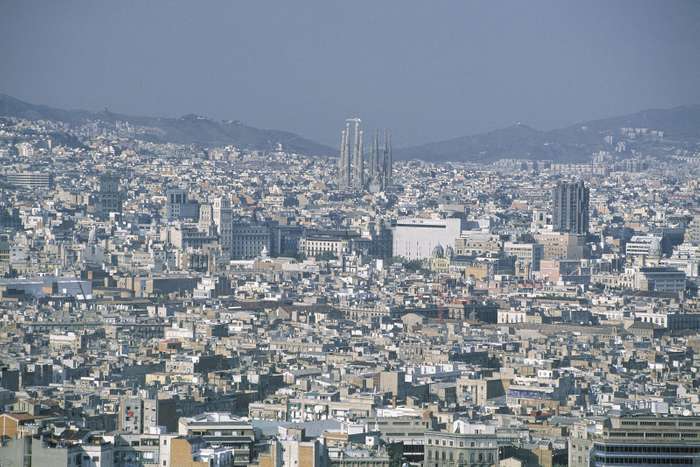
Elda
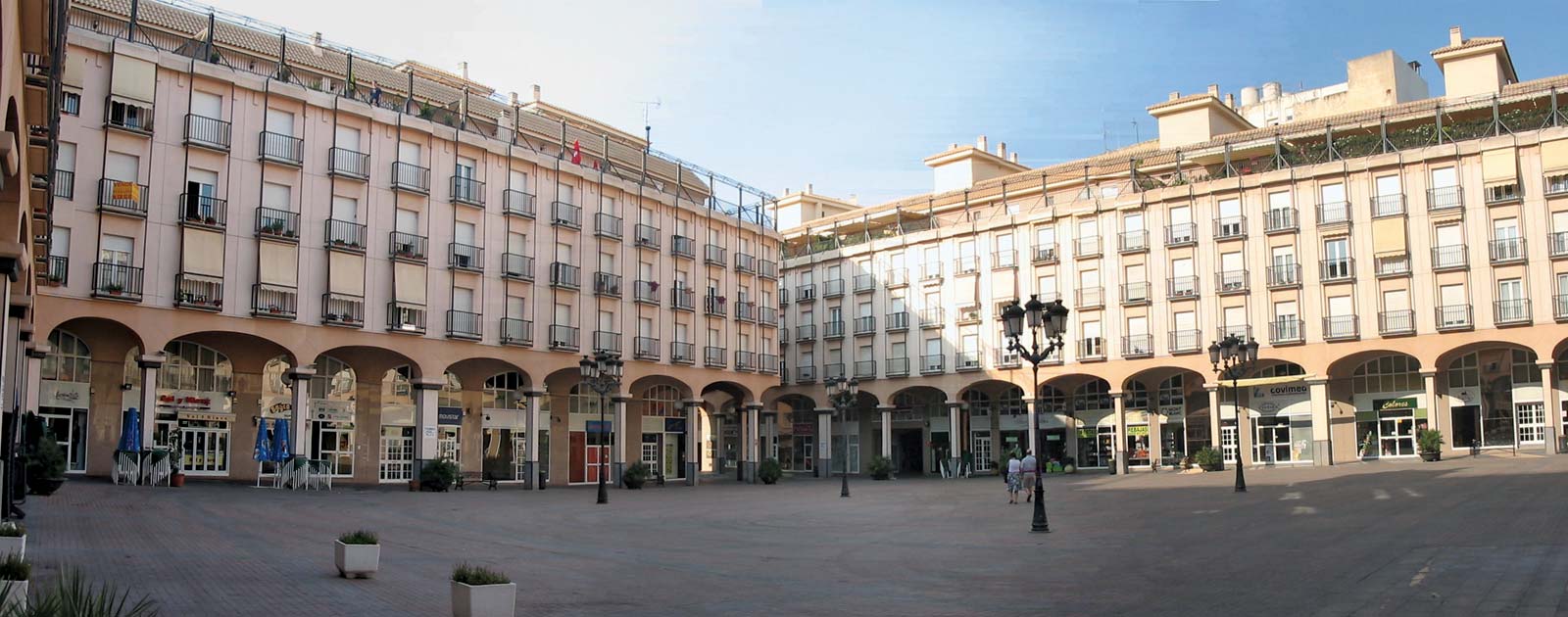
Elda, city, Alicante provincia (province), in the comunidad autónoma (autonomous community) of Valencia, southeastern Spain, northwest of Alicante city. Of ancient origin, Elda was called Idella by the Iberians, early peoples of Spain. The city first achieved importance under the Moors, who occupied it in the 8th century and built a castle (ruins remain); it was re-Christianized by James I of Aragon in 1265. In the 18th century Elda was given the title Fidelísima (“most faithful”) by Philip V for its loyalty to the crown during the War of the Spanish Succession. Elda, connected by rail with Almansa and Alicante, is the centre of a fertile grain and fruit-producing area. The manufacture of footwear is the city’s main industry, and Elda is the site of the Shoe Museum. Elda also hosts an annual shoe fair, which attracts exhibitors, designers, and manufacturers from all over Europe. Other manufactures include paper, furniture, and esparto fibre.
The city of Elda is one of the examples of industrial municipality and urban city, which presents large spaces, green areas and well-maintained and attractive corners. The footwear production has become the main hallmark of Elda, along with its great export activity throughout the world. Therefore, one of the main attractions of the city is the Footwear Museum, the most important in Europe in the footwear sector.
The population center of the city, originally Arab, began to develop in the surroundings of the Castle-Palace of the 12th and 13th centuries in the bed of the Vinalopó River, although now the urban area has been expanding.
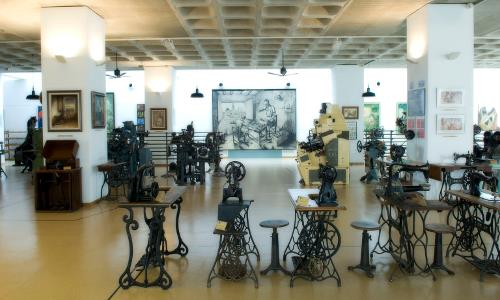
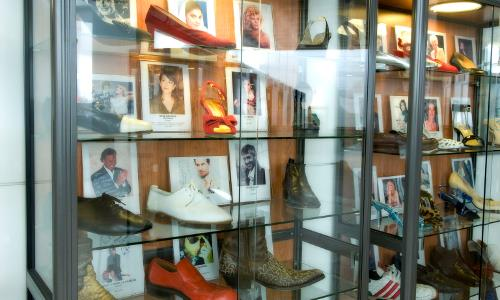
Alicante
Alicante, Valencian Alacant, provincia (province) in Valencia comunidad autónoma (autonomous community), southeastern Spain. It was formed in 1833 from parts of the historical provinces of Valencia and Murcia. The barren mountain terrain of the north and northwest stands in contrast to the densely populated southern fertile coastal plain, which is irrigated by the Segura River.

.
Valencia
Valencia, Catalan València, comunidad autónoma (autonomous community) of eastern Spain. It encompasses the provincias (provinces) of Castellón, Valencia, and Alicante. The autonomous community occupies a long and narrow area aligned on a rough north-south axis along the Mediterranean Sea, which lies to the east. It is bounded by the autonomous communities of Catalonia to the north, Aragon to the northeast, Castile–La Mancha to the west, and Murcia to the south. The autonomous community of Valencia was established by the statute of autonomy of July 1, 1982. Its government consists of an executive council, headed by a president, and a unicameral legislative assembly. The capital is Valencia city. Area 8,979 square miles (23,255 square km). Pop. (2007 est.) 4,885,029.
Castellón
Castellón, Valencian Castelló, provincia (province) in the comunidad autónoma (autonomous community) of Valencia, eastern Spain, and northernmost of the three provinces corresponding to the ancient kingdom of Valencia. Castellón comprises three distinct regions: the inhospitable Maestrazgo in the mountainous northwest, the Míjares and Palancia river valleys, separated by the Sierra de Espadán, and the Mediterranean coastal plains. Lumbering, livestock (pigs, poultry, and sheep) raising, and agriculture (olives and oranges in the valleys and almonds, figs, and pomegranates along the coast) constitute the principal economic activities of the province. Light industry (textiles, sandals, and ceramic tiles) is concentrated in the provincial capital, Castellón de la Plana, and in the towns of Onda, Alcora, Villarreal, and La Val de Uixó. Fisheries are based on the ports of Burriana, Vinaroz, and Benicarló. Tourism is centred on the Mediterranean beaches of the Costa del Azahar. Area 2,561 square miles (6,632 square km). Pop. (2007 est.) 573,282.
